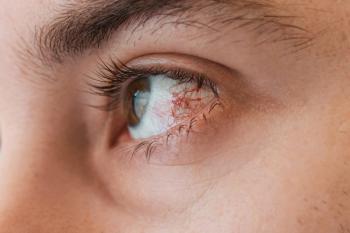
Freeform enables lens customization
The optical industry has been moving toward customization in lens design.
Atlanta-The optical industry has been moving toward customization in lens design-the ability to account for and react to factors specific to the individual patient-for some time, and this trend will soon be the norm in successful optometric practices, said Irwin M. Shwom, OD, RDO. Dr. Shwom spoke here about customization and freeform manufacturing during the annual SECO meeting.
Maximizing technology
"It is here now and, within a very short time, it will be one of the areas that separates a practice that is thriving from those that are failing," he added.
In the traditional method of progressive lens manufacturing, lenses are mass manufactured in a semi-finished form, then finished with the individual patient's prescription at a surfacing lab. This process has several limitations, he said, such as the ability to put only symmetrical curves on the lens and the availability of just a few basic designs to meet the needs of all wearers, which inevitably means that compromises must be made.
The freeform manufacturing model, in contrast, is based on a freeform generator that can cut virtually any surface on a lens blank. It is not a lens design, nor does it make lenses better in and of itself. Instead, it allows the creation of on-demand, customized designs for individual wearers at the time of surfacing. There is no need to pre-design and manufacture lenses.
Freeform also simplifies inventory, Dr. Shwom said. While traditional progressive lenses may require 120 different inventory items, freeform manufacturing requires only four or five lens blanks. Customization then becomes a software issue, not an additional inventory issue.
Enhancements to maximize vision
Customization can enhance several aspects of lens design and lens wear. First, it addresses inventory constraints that require that the traditional progressive lens base curve cover a range of prescriptions despite the fact that the design is optimized for only one prescription in the range, leaving the others with some degree of additional power error, often higher cylinders.
Freeform manufacturing allows the practitioner to offer a design for every prescription, matching each patient's combination of sphere, cylinder, and add. Freeform technology also addresses position of wear. Traditional lenses can't account for an individual's facial features or frame choices, he explained, since they are designed for average pantoscopic angle and vertex distance values and any difference between the individual's frame choice and that average will result in power area.
Any lens for any frame
Freeform technology provides position-of-wear customization, creating a design manufactured to the wearer's pantoscopic angle and vertex distance measurements. In addition, the combination of prescription and point-ofwear customization results in more accurate distance and near fields, Dr. Shwom said.
The new manufacturing technique also can optimize a design for nearly any frame shape. This offers consumers virtually unlimited frame choices while providing excellent reading and distance utility.
The wavefront aberrations that can affect visual performance also are taken into account. Aberrometry maps identify the patient's individual wavefront aberrations, and the data are used to refine subjective refraction. This process yields prescriptions that are tailored to a full range or focal distances and pupil sizes. The lens is then designed for this prescription and freeform manufactured to 0.01 D accuracy. This precision is not possible with standard lens surfacing tools.
Marketing opportunities
With customization and freeform technology, the practice can capitalize on another marketing opportunity. Opticians can recommend that patients with lenses customized for position of wear return after a given period to be measured again on a device such as the i.Terminal dispensary system (Zeiss). If the eyewear has shifted away from the original position of wear, the optician can adjust the frame.
"Having the patient back in the office for this adjustment gives the optician the opportunity for a second-pair sale," Dr. Shwom said.
Freeform technology is widely available in a growing number of optical labs. Using this technology to prepare lenses will increase the cost, depending on the extent of customization, such as whether the lenses are only customized for the patient's prescription and not for the frame shape or position of wear. The higher costs, and the better visual performance, position it among the top tier of optical products.
FYI
Irwin M. Shwom, OD, RDO
E-mail:
Dr. Shwom has done work for Carl Zeiss Meditec and Transitions Optical.
Newsletter
Want more insights like this? Subscribe to Optometry Times and get clinical pearls and practice tips delivered straight to your inbox.



















































.png)


